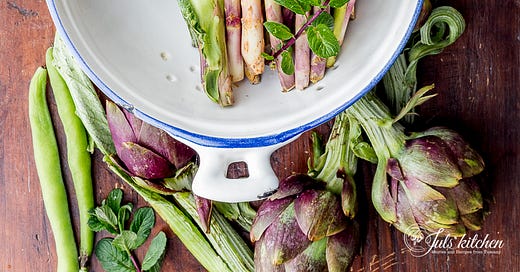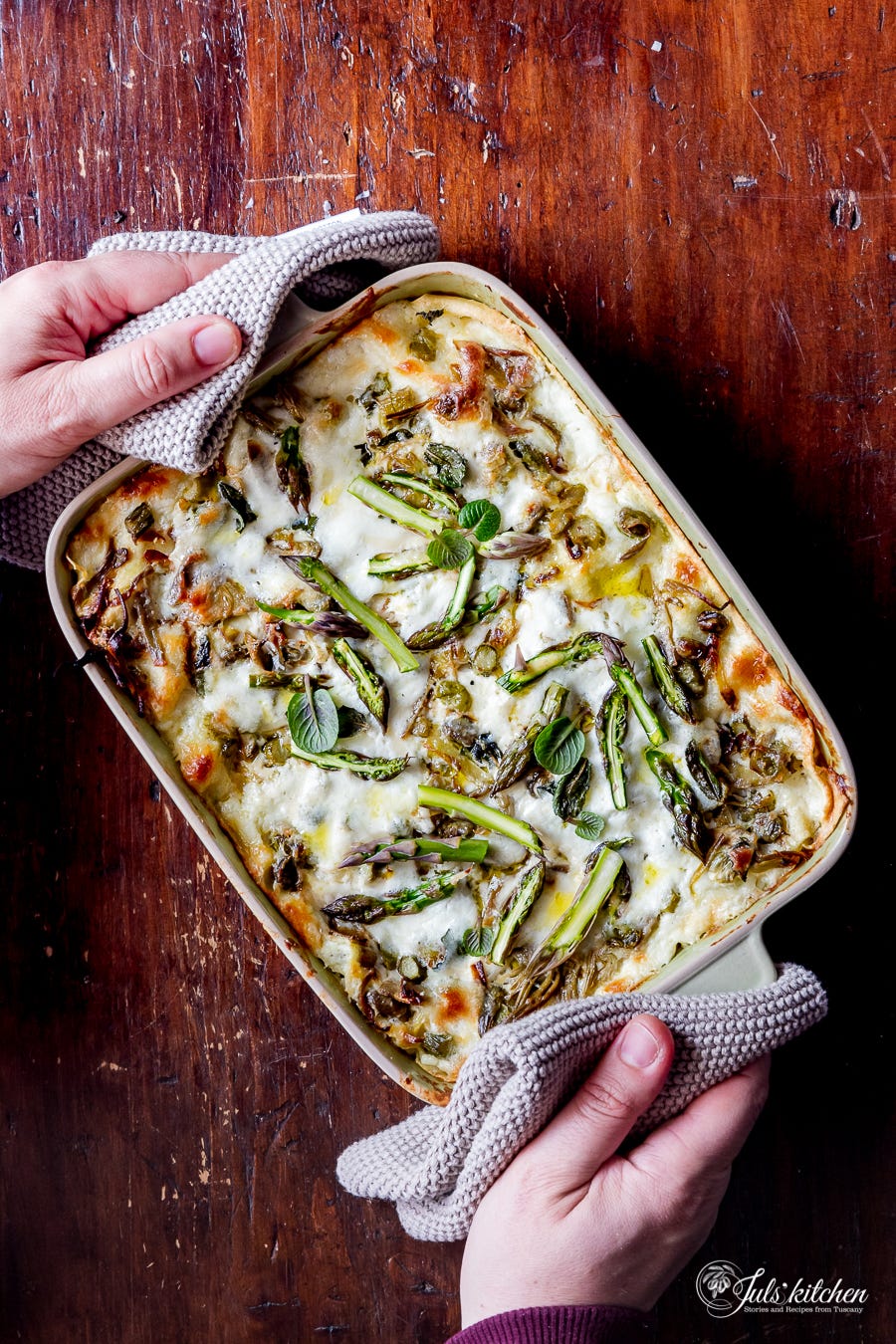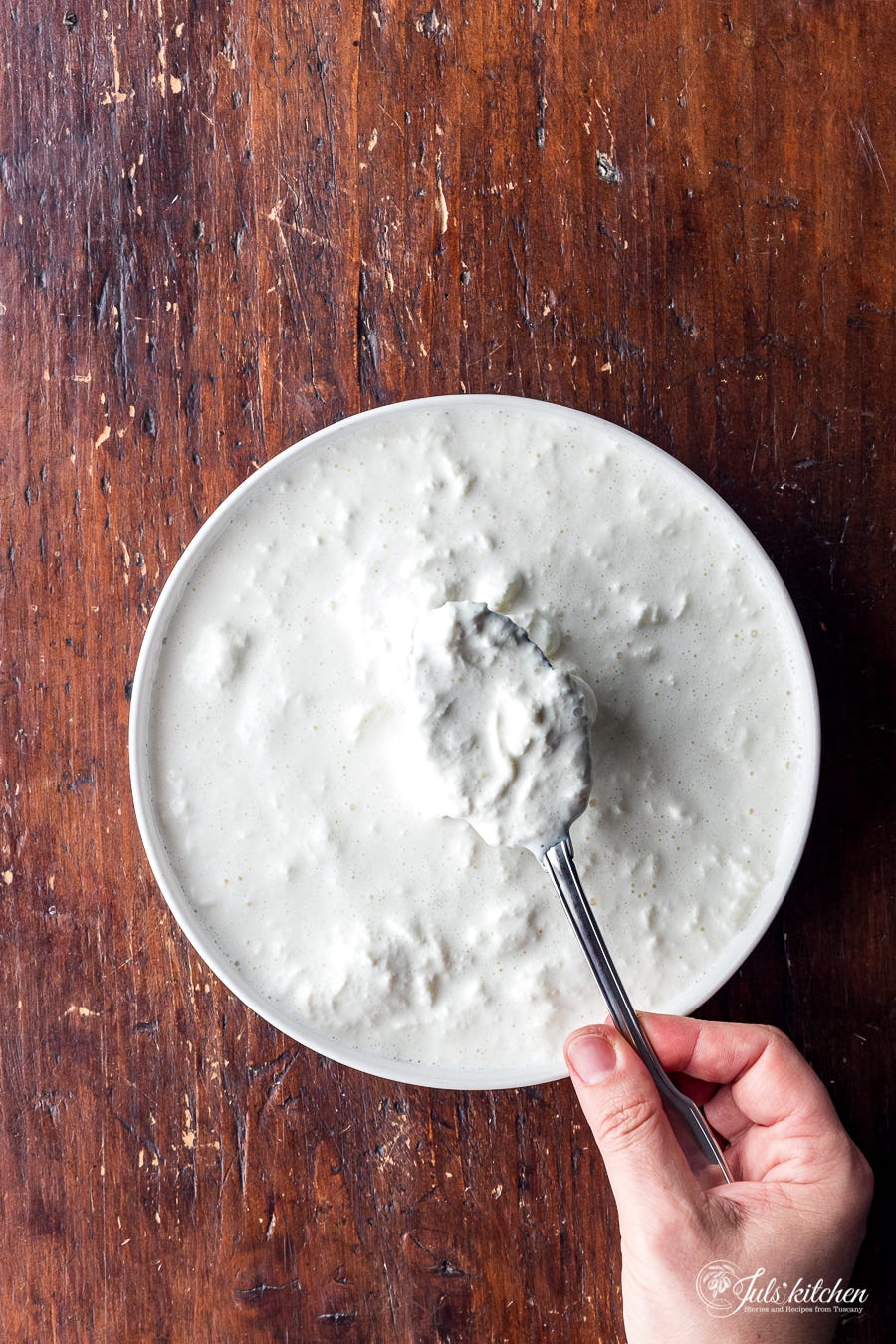Spring lasagne
The arrival of Spring seemed indeed like an event to celebrate after a long, dreary winter. So I made a tray of creamy, verdant lasagne.
Today’s recipe sums up some of the best Tuscan Spring vegetables: artichokes, asparagus and fava beans.
Let’s have a look at the ingredients.
Artichokes
Artichokes lead you from winter to spring. Piled on the market stalls next to cauliflower, Tuscan kale, and broccoli on frosty winter mornings, they are still there months later, when the warmer spring days finally come, along with the fresh peas, bunches of asparagus, and basketfuls of fava beans.
Their sturdy and spiky outer leaves protect a delicate heart, which can be eaten raw, simply dipped in your best extra virgin olive oil and salt.
When I was young, as soon as the warmth of spring woke up the countryside and our vegetable garden, my grandmother would sift through the huge, dusty green leaves of her artichoke plants, searching for the tender new artichokes. Those would often become a risotto, finished with a sprinkling of Parmigiano Reggiano and fresh parsley, or, more often, she would treat us to carciofi fritti.
Asparagus
Thick and white, bright green with their tips turning purple, wild and slender—the family of asparagus is wide and diverse.
My father used to love them quickly blanched and dipped in mayonnaise—not a Tuscan habit, but excessively delicious. My grandmother would make a frittata out of the wild ones that she would find in the woods.
Now I prefer to grill them until slightly charred. A soft boiled egg; a generous handful of fresh herbs, like mint and rocket; and a drizzle of extra virgin olive oil turn them into a light spring meal. Have some crusty bread ready.
On the blog, I have a recipe for crespelle with ricotta and asparagus.
Fava Beans
Just like removing leaf after leaf to reach the pale artichoke heart, shelling fava beans is a form of meditation. Spring vegetables require your patience: first to find them after the winter frost, then to bring them to the table.
Fava beans are often the protagonists of spring Tuscan picnics. They end up in baskets along with salame, pecorino cheese, a crusty loaf of bread, and a flask of red wine. Do you remember one of the last recipes I shared with fava beans? A Tuscan savoury ciambellone. Their slightly bitter taste complements the milky young pecorino, a perfect match that can be easily adapted to a dressing for fresh tagliolini or a creamy risotto.
Spring lasagne
Every time I make fresh pasta, it feels like a day to celebrate. I used to make fresh pasta often during my cooking classes, now I leave the rituals of making fresh pasta to Sundays or family celebrations. The arrival of Spring seemed indeed like an event to celebrate after a long, dreary winter. So I made a tray of creamy, melting, verdant lasagne.
On the blog, you can find the recipe for my nonna’s lasagne, for the traditional green lasagne from Bologna, and for a summer-y version, lasagna with ricotta and pesto, that I absolutely adore (I froze several trays of these lasagne for my post-partum).
To make today’s lasagne, substitute ragù with a selection of Spring vegetables quickly sautéed with garlic and olive oil. I used asparagus, artichokes and fava beans, but feel free to use what you have at hands and what is in season in your corner of the world.
Instead of bechamel sauce, which is the element binding together the traditional lasagne (it is bechamel, not ricotta, in the home-made, traditional, family-style Italian lasagne), use stracciatella.
Have you ever found stracciatella in your local supermarket? Do you have questions about how to use it? I can give you a few tips! ;)






